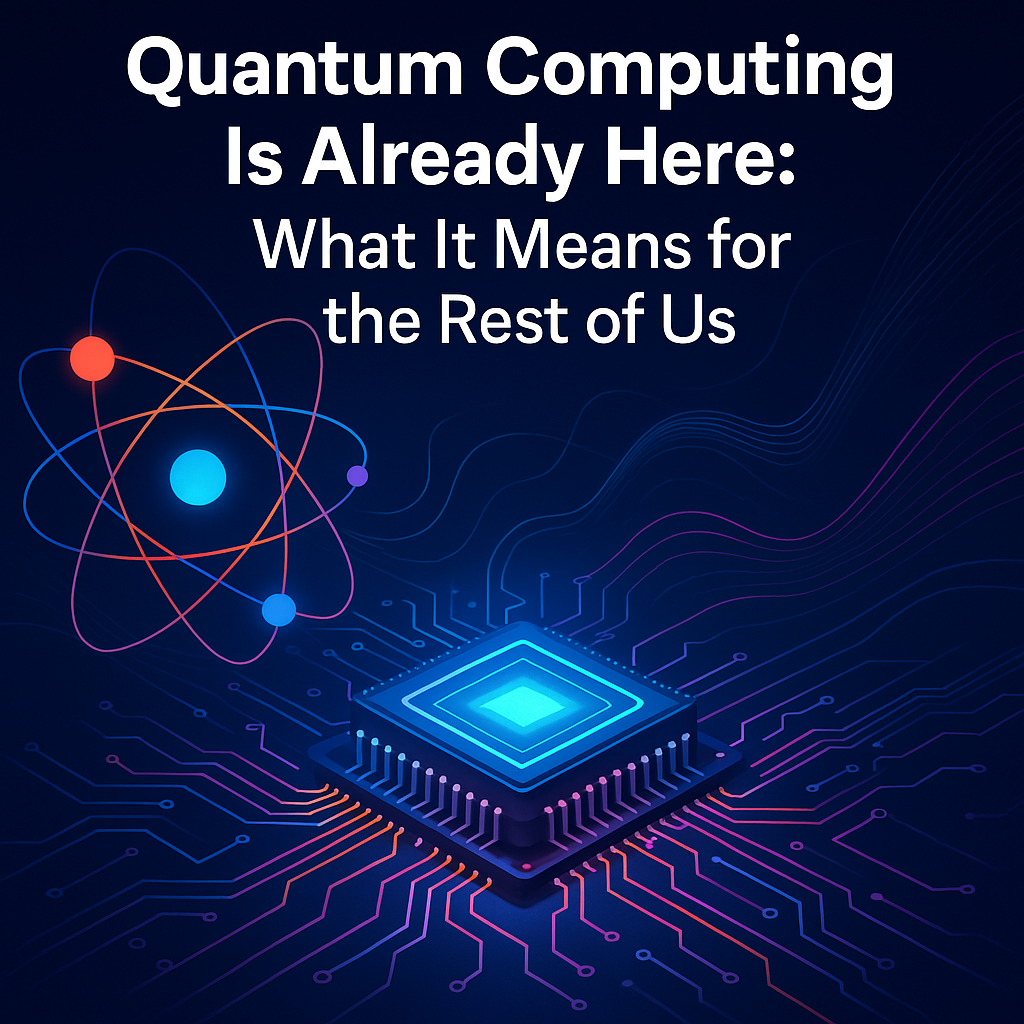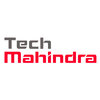IBM![]()
Working at IBM
Company Summary
Overall Rating
8% above
Highly rated for
Work-life balance, Company culture, Job security
Critically rated for
Promotions
Work Policy
Top Employees Benefits
About IBM

IBM (International Business Machines Corporation) is a global technology and consulting company with a mission to make the world work better. With a strong commitment to innovation, IBM focuses on leveraging hybrid cloud and AI technologies to help businesses and community's advance.
The company operates in over 170 countries, employing more than 300,000 professionals globally. IBM’s broad portfolio includes services in consulting, software, infrastructure, and research. Through its open-source platform, partnerships like Red Hat, and its emphasis on responsible tech, IBM is shaping the future of technology.
IBM’s legacy of innovation is driven by its 19 global research labs and thousands of patents, maintaining its position as a leader in cutting-edge tech solutions. The company continues to work toward building trust in technology and empowering clients to digitally transform their operations with speed and scale.
ABECA - AmbitionBox Employee Choice Awards
IBM Ratings
Overall Rating
Category Ratings
Work-life balance
Company culture
Job security
Skill development
Work satisfaction
Salary
Promotions
Work Policy at IBM
IBM Reviews
Top mentions in IBM Reviews
Compare IBM with Similar Companies
Change Company | Change Company | Change Company | ||
|---|---|---|---|---|
Overall Rating | 4.0/5 based on 23.4k reviews | 3.6/5 based on 97.6k reviews | 3.7/5 based on 57k reviews | 3.8/5 based on 62.9k reviews |
Highly Rated for | Work-life balance Skill development Job security | Job security Work-life balance | Job security | No highly rated category |
Critically Rated for | Promotions | Promotions Salary Work satisfaction | Promotions Salary | Promotions |
Primary Work Policy | Hybrid 79% employees reported | Work from office 80% employees reported | Hybrid 62% employees reported | Hybrid 78% employees reported |
Rating by Women Employees | 4.0 Good rated by 7.4k women | 3.7 Good rated by 28.4k women | 3.8 Good rated by 16.5k women | 3.8 Good rated by 23.8k women |
Rating by Men Employees | 4.0 Good rated by 14.8k men | 3.6 Good rated by 63.9k men | 3.7 Good rated by 38k men | 3.8 Good rated by 36.5k men |
Job security | 3.9 Good | 4.5 Good | 3.8 Good | 3.7 Good |
IBM Salaries
Application Developer
Software Engineer
Software Developer
Senior Software Engineer
Advisory System Analyst
Senior Systems Engineer
Senior Consultant
Data Engineer
Specialist Testing
Senior System Analyst
IBM Interview Questions
IBM Jobs
IBM News
Disruptive Rain Unveils Emotionally Intelligent AI “Chief of Staff” for the Enterprise Age
- Disruptive Rain introduces an emotionally intelligent AI platform as a digital Chief of Staff for enterprises, aiming to revolutionize executive-level decision-making.
- The platform offers a cognitive system that interprets real-time data, delivers insights through emotionally aware avatars, and consolidates information across departments.
- It aims to simplify decision-making by providing a unified cockpit for situational awareness and human-like dialogue through AI avatars that adapt to user needs.
- Key features include emotionally intelligent AI avatars, a real-time decision engine, modular AI agents for efficiency and risk detection, and a voice-activated interface.
- Disruptive Rain's platform replaces traditional spreadsheets and dashboards with a conversational interface designed to streamline operations and decision-making.
- The system is plug-and-play ready for various environments, built on IBM's infrastructure, and targets a global market value of $1.7 trillion, with a current SAM of $75–100 billion.
- The platform focuses on emotional intelligence, real-time orchestration, and seamless interaction, offering a new operating system for making human decisions at scale.

Is watsonx better than ChatGPT?
- Artificial intelligence has become integral in modern technology, with platforms like IBM's watsonx and OpenAI's ChatGPT standing out.
- Watsonx is an enterprise-focused AI platform offering tools for creating, training, and deploying models, with a focus on governance and compliance.
- ChatGPT, developed by OpenAI, is a conversational agent known for natural language understanding, used widely for writing assistance and customer service.
- Key differences include target audience, customization options, governance tools, and user interface designs.
- In terms of performance, ChatGPT excels in contextual understanding and creative content generation, while watsonx is oriented towards accurate outputs and compliance.
- Choosing between the two depends on specific needs: ChatGPT for versatile tasks and watsonx for compliant AI systems with governance tools.
- Watsonx is better suited for enterprises needing control and domain-specific training, while ChatGPT offers user-friendliness and creative dialogue functionalities.
- Both platforms cater to different user needs and can complement each other in AI applications.

From Deep Blue to Smart Devices: The Power of Reactive AI.
- Reactive AI operates based on current input without memory or learning from past data, following predefined rules for real-time responses.
- IBM’s Deep Blue, known for defeating Garry Kasparov in 1997, is a prime example of reactive AI, relying on raw processing power and rules.
- Modern smart devices like voice assistants and robotic vacuums utilize reactive AI for specific functions based on sensor inputs and predefined logic.
- Reactive AI systems are efficient, consistent, and suitable for tasks where decisions are not history-dependent and require instant actions.

Can Quantum AI Solve the Climate Crisis? Exploring the Fusion of Qubits and Green Tech
- Quantum AI, the fusion of quantum computing and artificial intelligence, holds potential for addressing complex climate change challenges that traditional supercomputers struggle with.
- Quantum AI can efficiently model nature, simulate chemical interactions, optimize decisions, and spot patterns with more precision than classical computing.
- Some applications of Quantum AI include improving solar panels, hydrogen storage, simulating atmospheric chemistry, and optimizing energy flow in decentralized power systems.
- Companies like Zapata Computing, IBM, and startups such as Multiverse Computing are already exploring Quantum AI solutions for climate-related problems.
- However, Quantum computers are still in the early NISQ era, and algorithms need refinement to be effective for climate applications.
- Energy consumption and hardware challenges remain, but efforts are underway to make Quantum computing more sustainable.
- Investments in quantum hardware, AI research, and climate modeling could lead to significant progress in addressing climate change by the 2030s.
- Quantum AI won't single-handedly solve the climate crisis but could enhance the capabilities of scientists, engineers, and policymakers in developing more efficient solutions.

Quantum Computing Is Already Here: What It Means for the Rest of Us
- Tech giants like Google, IBM, NVIDIA, and Microsoft have achieved a historic milestone in quantum computing in 2025.
- Quantum computers are now solving real-world problems, showcasing their usefulness.
- Quantum computers utilize qubits, which can be in multiple states simultaneously due to superposition.
- Qubits can be entangled, enabling quantum computers to explore multiple solutions at once, unlike classical computers.
- Google's quantum system solved a chemistry problem in 7 seconds that would take 47 years on a classical supercomputer.
- NVIDIA and IBM have also made significant strides in quantum computing, demonstrating the technology's potential.
- Quantum computing has practical implications in cybersecurity, artificial intelligence, science, medicine, energy, and logistics.
- Post-quantum encryption is being developed to counter the threat quantum computers pose to current encryption methods.
- Quantum computing could accelerate AI models, scientific simulations, and optimization processes in various industries.
- The potential of quantum computing in fields like energy, logistics, and medicine could lead to efficient planning, cost reduction, and advancements.
- In the next 5-10 years, quantum computing is expected to bring significant advancements but might lead to technological inequality.
- Ethical, regulated, and accessible development of quantum computing is crucial to avoid unfair advantages as this technology progresses.
- 2025 marks the transition of quantum computing from theory to reality, impacting various aspects of daily life.
- Quantum computing advancements will influence encryption, data transmission, analysis, and storage, although the general public may not notice the direct changes immediately.
- Quantum computing is set to revolutionize technology, emphasizing the need for ethical consideration, regulation, and inclusive access to this powerful tool.

Half of CEOs want new AI roles. What IBM says HR can do to prepare
- CEOs are optimistic about AI, with 85% expecting positive ROI from AI efficiency investments by 2027 and 77% foreseeing gains from AI growth initiatives.
- 61% of CEOs are implementing or preparing to expand AI agents in their companies, per IBM.
- Despite the rise in AI adoption, companies tend to have a narrow view, focusing on tools over evolving work, roles, and skills alongside AI technology.
- Many organizations are hiring for new AI-related roles that didn't exist a year ago, according to IBM's 2025 CEO Study.
- IBM's Kim Morick emphasizes that the misconception of AI adoption lies in solely choosing platforms without considering necessary workforce adaptations.
- Successful companies are prioritizing AI literacy for all employees, integrating learning into daily activities, and redesigning roles for higher-value tasks.
- CEOs are utilizing a 'buy, build, bot, borrow' strategy to address talent shortages, combining hiring, reskilling, AI integration, and external partnerships.
- HR leaders play a crucial role in assisting executives and managers in understanding AI's impact on roles and supporting employees.
- 69% of CEOs believe the success of their organizations hinges on developing a diverse pool of leaders with strategic acumen and decision-making authority.
- HR should focus on role-specific AI training and collaborate with team leads to embed training in daily workflows, emphasizing both technical skills and critical thinking.
- Tracking productivity and adoption metrics, along with employee feedback, is vital to ensure effective AI tool use within organizations.
- HR Tech keynoter Nickle LaMoreaux offers further insights on AI in HR.
- HR priorities include investing in role-specific AI training and ensuring employees feel supported and capable in using AI tools.
- Success in AI implementation involves more than completion rates on training platforms—it includes practical application and employee confidence in AI tools.
- Organizations need to focus on actual usage of AI tools in daily work to see tangible results.
*AI-Powered Malware: The New Frontier of Cyber Threats*
- AI-powered malware utilizes machine learning to evade detection, adapt to new environments, and identify vulnerabilities.
- Types of AI-powered malware include DeepLocker, AI-generated phishing emails, and autonomous malware.
- AI-powered malware presents challenges for cybersecurity as it requires advanced detection systems, behavioral analysis, and continuous learning.
- Defense strategies against AI-powered malware involve implementing AI-powered security solutions, staying informed, and conducting regular security audits.
- Understanding the implications and tactics of AI-powered malware allows organizations to better combat these emerging threats.
- AI-powered security solutions like CrowdStrike Falcon, Darktrace Enterprise Immune System, and Vectra Cognito offer advanced threat detection and response.
- Advanced endpoint protection solutions include SentinelOne Singularity, Cylance PROTECT, and Sophos Intercept X.
- Security orchestration and incident response tools such as IBM QRadar Advisor with Watson, Palo Alto Networks Cortex XDR, and Cybereason XDR aid in threat investigation and response.
- User and entity behavior analytics are enhanced by solutions like Exabeam Advanced Analytics, Cynet 360, and IBM Guardium.
Ethereum’s Lubin Sparks Wall Street Interest in DeFi with Bold Treasury Strategy Vision
- Ethereum co-founder Joseph Lubin emphasizes profit-driven DeFi access and treasury exposure for Wall Street adoption.
- IBM's Tom Lee highlights companies using Bitcoin and Ethereum in treasury strategies as models bridging traditional finance with cryptocurrencies.
- Regulatory concerns are decreasing, paving the way for increased enterprise interest in decentralized finance and token issuance.
- Lubin promotes Ethereum and Bitcoin treasury strategies as key for bringing traditional finance into DeFi.
- Lubin points to SBET as a promising treasury tool centered around staking Ether, similar to successful Bitcoin-forward strategies.
- Tom Lee from Fundstrat sees GRNY ETF and SBET as connecting points between DeFi and conventional capital markets.
- Steady profit streams like those associated with Ethereum are expected to attract more Wall Street investment into the DeFi ecosystem.
- Improved scalability and affordability post-upgrades position Ethereum for global-scale applications, making DeFi more appealing to enterprises.
- With clearer regulations and reduced fear of SEC crackdowns, companies are increasingly exploring DeFi concepts and tokenization.
- Web3 features are now being integrated by traditional Web2 developers and corporations into products, viewing Ethereum as a comprehensive tech stack.
- Friendly regulatory conditions encourage innovation, allowing developers to experiment with Web3 without excessive concern over bans or legal actions.
- Ethereum's community-focused governance and ownership model are becoming attractive to teams beyond financial profits.
- Joseph Lubin anticipates mainstream adoption of DeFi tools through Wall Street participation, leading to a new era of financial evolution.
Reddit user surprised when 1960s computer panel emerged from collapsed family garage
- A Reddit user found a rare RCA Spectra 70/35 computer control panel from 1966 in their family's collapsed garage.
- The mainframe component requires 1,500lbs of missing equipment to run.
- The panel was left in the garage by a former tenant who worked at IBM, remaining hidden for decades.
- It features the 'Power' button, indicator lights, control switches, and a 'Memory Address Stop' panel.
- This particular 70/35 RCA computer panel seems to have no existing online photographs.
- The RCA Spectra 70 series aimed to compete with IBM's System/360 mainframes in the mid-1960s.
- The Spectra 70 models showcased 'third-generation' computer technology like integrated circuits.
- RCA's marketing materials highlighted the industry's first monolithic integrated circuitry in full-scale systems.
- The family may have kept the 70/35 panel as a keepsake after the system's decommissioning.
- RCA discontinued the Spectra series in 1971 when exiting the mainframe computer business.

What was the storage size of the first USB flash drive?
- The storage size of the first USB flash drive was 8 MB.
- The first patent for a USB flash drive was filed in 1999 by M-Systems which later partnered with IBM to release the DiskOnKey with 8 MB storage.
- Singaporean company Trek 2000 International introduced its own 8 MB flash drive, branded as the 'ThumbDrive.'
- Despite its small capacity compared to modern drives, 8 MB was a significant advancement at the time, offering portability and rewritability.
- USB flash drives have evolved over the years with increased storage capacity and reduced costs, becoming an essential part of digital life.
IBM Subsidiaries
Daksh eServices
IBM Research
TrellisSoft Inc.
Merative
SPSS South Asia
Algorithmics
IBM Offices
Compare IBM with




















Contribute & help others!
Companies Similar to IBM




IBM FAQs

Reviews
Interviews
Salaries
Users




